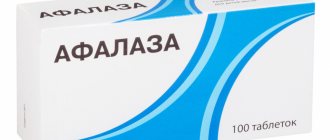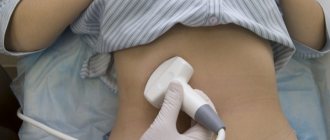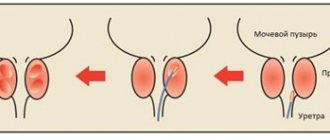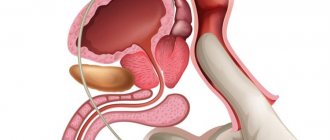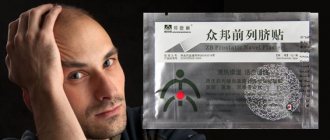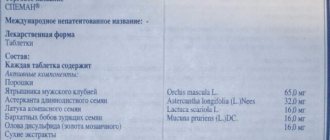Bedwetting in men most often occurs after 45 years of age. Doctors say that in 50% of cases the main causes lie in previously untreated diseases. In other patients, the problem arises due to age-related and other changes. Taking into account the causes, the disease is classified into permanent (primary), acquired (secondary) and recurrent.
When faced with enuresis for the first time, you should immediately consult a doctor. Ignoring and hiding the problem is fraught with psychological and physiological complications. Etiological factors that provoke urinary incontinence in men during sleep:
- constant stress, mental disorders;
- neurological diseases (multiple sclerosis, Parkinson's disease, etc.);
- BPH;
- urinary system infections;
- postoperative complication;
- mechanical injuries of the spinal cord and brain;
- age-related changes.
The doctor will collect anamnesis, understand the causes of bedwetting in men, and prescribe adequate treatment, selected on an individual basis. The sooner therapy begins, the higher the chances of eliminating the problem.
Causes and prevalence of nocturia
Nocturia, or increased urination at night, is considered one of the most common and bothersome symptoms in men suffering from prostate adenoma (BPH).
Analysis of our own experience gives grounds to assert that about 85% of patients initially complain of increased frequency of urination at night, sleep disorders and, accordingly, a decrease in subsequent daytime activity. Nocturia in men is traditionally viewed as negative manifestations of cumulative symptoms associated with detrusor overactivity. Nocturia is one of the most troubling symptoms in elderly patients. The need to urinate at night is generally considered the most distressing symptom associated with PCA. Increased frequency of nighttime urination is directly associated with age: nocturia occurred in only 4% of children aged 7 to 15 years. Conversely, 66% of men aged 50 to 59 years and 91% of men over 80 years had nocturia [1]. Apparently, anatomical and physiological changes in the lower urinary tract in the aging body play a key role in this.
Nocturia, as already noted, is the most common urological symptom in older men. Prevalence estimates vary widely because different definitions were used and different age groups were examined. The most widely used definition of nocturia in older men is emptying the bladder at least twice during the night. Based on this definition, it was found that the prevalence rate of nocturia in the adult male population ranges from 10% to 15%. Approximately similar data are presented in a number of other works [2–5]. The frequency, as well as the severity, of nocturia increases linearly with age in older age groups. When nocturia is defined as waking up to urinate at least once during the night, it turns out that 30% of men aged 45 and 79% of men aged 80 report this symptom.
The most frequently cited pathophysiological causes of nocturia in the elderly:
- excessive urine output (polyuria);
- excessive urine output at night (nocturnal polyuria);
- low bladder capacity at night;
- their combination (mixed nocturia) [6–8].
Diabetes is the most common cause of polyuria. Increased nighttime urinary output may be explained by an age-related decrease in nocturnal vasopressin secretion.
Diagnosis of frequent night urination
Treatment of nocturia should always begin with identifying the cause of the pathology. In addition to a general examination, the patient is often prescribed:
- Ultrasound of the bladder to determine residual urine volume;
- ultrasound diagnostics (USD) of abdominal organs;
- Ultrasound of the kidneys;
- bacterial culture of urine;
- keeping a diary of urination (for male nocturia it is kept for 3 days, and for female nocturia - 4);
- general urine analysis;
- urine sample according to Zimnitsky (allows you to determine the volume of daily urine and its specific gravity);
- blood test for vasopressin levels;
- filling out the ICIQ-N questionnaire to determine the patient’s quality of life assessment.
Pathophysiology of nocturia in adult men
In an aging person, the total amount of urine produced in a 24-hour period often remains normal or slightly increased, but the circadian rhythm of urine output changes, resulting in increased nocturnal urine production, i.e. to nocturnal polyuria. While at age 30, urine output during the day is twice as high as at night, older adults produce equal amounts of urine during the day and at night, or a significantly larger volume may be excreted at night than during the day [9]. This can be caused by a wide range of factors: congestive heart failure, angina, sleep apnea, kidney disease, estrogen deficiency or multiple sclerosis.
Behavioral factors such as drinking alcohol, caffeine, or drinking excess fluids shortly before bedtime may also contribute to nocturnal polyuria. Another important cause of nocturia is low bladder capacity (i.e., the largest volume of urine released during a single bowel movement) at night. A decrease in the structural volume of the bladder may be due to the development of fibrosis, cancer, or previous radiation therapy. The presence of lower urinary tract symptoms (LUTS) in PDA often leads to decreased functional bladder capacity due to cervical obstruction caused by detrusor overactivity or large postvoid residual urine. All this may be accompanied by passing episodes of nocturia with the release of small portions of urine.
CC Schulman et al. (2005) [10] identify several severe situations that significantly affect the quality of life, accompanied by nocturia in patients, which is caused by LUTS/PRO. Although their list is small, they have far-reaching consequences:
- insomnia and intermittent, restless sleep;
- drowsiness and painful fatigue the next day;
- mental health problems with decreased cognitive functioning and increased risk of depression;
- short-term forgetfulness.
To this should be added a clear decrease in the quality of life.
Sleep deprivation is also known to cause a dementia-like condition that is reversible by returning to normal sleep patterns [11]. There is an association between insomnia and depression, which leads to restless sleep, while sleep disturbances are a risk factor for depression. Improved sleep quality in people with depression is often closely linked to overall improvement. Optimal treatment of sleep disorders may thus be a tool in the prevention and treatment of depression. Looking at the relationship that exists between nocturia and poor sleep, R. Aplund et al. (2004) determined whether a relationship could be identified between nocturia and depression [12]. They reported a significant association between major depression and nocturia, with this association becoming stronger in men with more frequent nighttime urination.
The urinary symptoms that patients suffer from can be related to both bladder emptying (obstructive or voiding symptoms) and phasic storage (irritative symptoms). Their clinical characteristics are presented in table. 1.
Assessing the severity of each of the above groups of symptoms, it should be noted that the most distinct concern in patients is caused by irritative symptoms, not only because of their severity, but also because of their significant impact on the quality of sleep.
The International Continence Society (ICS) defines nocturia as “the complaint that a person has to wake up in the middle of the night one or more times to urinate” [13, 14], with “the person sleeping before and after urination” [15]. It should be noted that one-time urination at night cannot be classified as true nocturia. We can talk about it in cases where a person gets up to urinate two or more times. Speaking about the quality of sleep after urination, one cannot note its usefulness, since a new episode of falling asleep can be long and painful. Patients who wake up at night to urinate may have difficulty returning to sleep and may not be able to go back to sleep for a long time. By the way, this situation is typical for respondents with LUTS/APV. It is quite obvious that sleep disorders have a multifactorial genesis, since the difficulties of subsequent falling asleep processes are determined by two conditions - manifestations of anxiety and depressive disorders.
Prevention
To prevent the development of polyuria, dysuria and other urological problems, it is recommended:
- observe drinking regime;
- lead a healthy lifestyle;
- avoid hypothermia;
- establish a certain urination regime;
- use compression stockings on the lower extremities (at the first signs of venous congestion);
- perform exercises that strengthen the muscles of the perineum;
- promptly diagnose and treat inflammatory and infectious diseases;
- minimize the impact of stress and nervous tension - normalize work and rest schedules, do yoga or meditative practices, relax in nature and lead a quiet social life.
Ways to prevent nocturia
Consequences of nocturia
For some patients, nocturia is the most worrying condition, as it disrupts the sleep of not only the patient himself, but also his partner. Nocturia with sleep disturbance has a pronounced negative effect on a person the next day in terms of decreased energy, weakness, decreased concentration, ultimately negatively affecting his well-being and quality of life. According to a number of authors [14], nocturia and sleep disorders can lead to serious consequences on the road (accidents) and during work, increasing the risk of various diseases in the future and even death.
Poor sleep is accompanied by fatigue throughout the next day, obsessive malaise, decreased mental capacity, loss of energy and depression. Many patients avoid traveling long distances, stay home, avoid places where there is no easy access to a toilet, or limit the amount of fluid they drink.
Regardless of the underlying cause, nocturnal bladder emptying is associated with sleep disorders, the most prominent manifestations of which are insomnia and interrupted sleep. The incidence of sleep disturbances increases with the number of bladder emptyings per night. It is a well-known fact that treatments that reduce the symptoms of nocturia improve sleep quality and confirm the cause-and-effect relationship between nocturia and poor sleep. Sleep quality tends to decline as people age. However, aging itself is not necessarily associated with poor sleep, for example, the prevalence of insomnia is lower in older people with fewer comorbidities.
In addition to the fact that nocturia causes fatigue during the day and generally has a negative impact on the patient’s ability to work and health, most wives of men suffering from nocturia also experience significant discomfort and suffer from several diseases due to urinary symptoms in their husbands. Their most common complaint is sleep disturbance due to their spouse's tendency to get up at night to urinate. In a study [16], about half of the women surveyed reported being tired during the day due to waking up at night when their spouse had to empty their bladder. These findings suggest that sleep interruption and associated anxiety due to nocturia may be as severe in the spouse as in the patient. Moreover, sleep disturbance caused by nocturia in those caring for the patient leaves a negative imprint on the mental health of the life partner.
Approximately 20% of all traffic accidents occur due to decreased concentration or falling asleep while driving. Traffic police data for the Kharkov region confirms the fact that the most serious accidents occur on national highways, and their cause is a loss of attention and concentration. There is evidence that insufficient sleep due to nocturia may increase the risk of diseases such as depression, diabetes and cardiovascular disease [12]. Therefore, nocturia can have far-reaching consequences.
Symptoms
Nocturia itself is part of a symptom complex of many diseases. The main sign of the presence of pathology is that the patient urinates mainly at night rather than during the day (the predominance of nighttime diuresis over daytime).
In this case, the patient experiences:
- increased irritability;
- fatigue and low performance during the day;
- insomnia, the cause of which is the frequent need to go to the toilet at night;
- depression;
- anxious and sensitive sleep;
- memory problems;
- labile emotional state.
The impact of sleep disturbance on physical health: increased risk of somatic diseases
It has been reliably established that the normal cycle of wakefulness and sleep ensures the stability of the homeostatic regulation of the autonomic, neuroendocrine and immune systems [24]. There are metabolic and endocrine changes in sleep-deprived healthy volunteers that are similar to those observed during normal aging. Accordingly, it has been suggested that chronic sleep loss may exacerbate the severity of age-related pathologies such as diabetes and hypertension [25]. Sleep also plays a role in regulating the immune system, as sleep deprivation has been noted to have a suppressive effect on the immune system. Loss of sleep also contributes to cardiovascular discomfort. Nocturnal complications can become factors of myocardial ischemia.
Sleep disturbances and increased risk of serious complications
Nocturia is considered an independent risk factor for falls in the elderly, probably due to insufficient lighting and incomplete awakening. A twofold increase in falls has been reported in older adults who stand up twice or more per night to empty their bladder. There are numerous examples of bone fractures due to a fall in sleep-deprived patients who attempted to stand on a table and drive an unnecessary nail into the wall or pull up a curtain. Daytime fatigue and sleepiness caused by interrupted sleep, which directly contribute to impaired perception and balance, may further pose a threat of orthostatic hypotension upon standing, especially in elderly patients with cardiovascular disease.
People over the age of 65 experience an increased incidence of falls, with 30% of those under the age of 70 falling at least once a year. This number increases to 50% by age 80. More than two-thirds of falls in older adults result in some physical injury, with about a quarter of those who fall requiring medical attention. Depending on the severity of bone fractures, healing is delayed for a long time, accompanied by long-term disability. There are frequent cases of fractures in healthy, full of energy men that end tragically. An example is the death of the famous actor G. Burkov, who, having lost his balance due to insufficient sleep, fell from a relatively small height, suffered a hip fracture and died from a serious complication - fat thromboembolism. In older age groups, falls are the leading cause of death due to severe injuries. V. Stel et al. (2004) [26] provide the following information: one third of those who fell showed a decline in their functional state, while 17% and 15% experienced a decrease in social and physical activity, respectively, which was a direct consequence of the fall. Even those who are not seriously injured due to a fall may severely limit their activities due to fear of falling. One interesting report [27] showed that voiding at least three times per night was associated with increased mortality compared with voiding less at night.
Considering in aggregate the multilateral disturbances of vital functions due to lack of sleep due to frequent urination at night, we can draw a clear conclusion about their negative impact on the quality of life. An increased degree of nocturia is directly proportional to a greater deterioration in quality of life (Fig. 1).
Increased frequency of nighttime urination is also inversely related (inversely proportional) to good sleep and well-being. Sleep deprivation associated with nocturnal voiding causes decreased vitality and activity in otherwise healthy people with active professional and social lives and leads to decreased work productivity.
However, in our opinion, this concept has a number of significant flaws. Thus, many patients note that the first awakening can lead to subsequent many hours of insomnia, and the patient will feel tired and exhausted the entire next day. On the other hand, there are many examples where a patient only needs 2-3 hours of deep pre-morning sleep to feel full of energy and vigor throughout the next day. Meanwhile, the famous Austrian urologist B. Djavan et al. (2005) [28] confirmed the concept of PHC by conducting studies with tamsulosin OKAS 0.4 mg orally once a day. Frequency of nocturia, quality of sleep and quality of life were assessed. It was found that a decrease in the frequency of nighttime urination correlates with an increase in heart rate and an improvement in quality of life. Taking tamsulosin OKAS increased the duration of deep sleep by 81 minutes compared to placebo. However, these data are not reliable because they were tested on a small number of patients.
In addition to subjective assessment of sleep quality, an objective assessment method using actigraphy, which records body movements during sleep using wrist activity measurements, is becoming widespread in clinical practice. The actigraphy method is based on the principle that during sleep the number of movements decreases, and if the patient gets up to urinate, the number of movements increases. Then, in the morning, the time, number and frequency of awakenings and urinations are calculated. The advantages of actigraphy include: ease of use, low cost, non-invasive nature, automatic operation and the possibility of use in outpatient settings [29].
Meanwhile, it should be noted that nocturia is one of the most troubling complaints in men with LUTS caused by PDA. This is because nocturia affects the quality of sleep and can have a significant negative impact on how the sufferer feels the next day in terms of energy, concentration and mood, and ultimately in terms of overall quality of life. It is clear that quality of life is considered the most important intermediate indicator in the treatment of LUTS/PRO, while sleep disturbances are an important component of quality of life.
Pathogenetically, bladder obstruction increases the volume of residual urine and detrusor overactivity, leading to an increase in the frequency of night and daytime urination. There are a number of studies showing a correlation between obstruction and nocturnal polyuria. One hypothesis is that long-term urinary tract obstruction may increase upper tract pressure, impairing the function of the medullary renal system and the distal tubular system, leading to nocturnal polyuria [30]. Another hypothesis is that decreased daytime sodium excretion due to obstruction may disrupt sodium cycling and cause sodium hypersecretion at night.
Of course, impaired sleep quality associated with night urination can result in daytime fatigue, decreased mental (cognitive) performance, increased susceptibility to various diseases and severe depression. Accordingly, nocturia can lead to a significant decrease in the quality of life of both the patient and his wife. Waking up at night to empty the bladder is also associated with an increased risk of falls and fractures in older men.
Bladder obstruction and detrusor overactivity may contribute to decreased nocturnal functional bladder capacity. Therefore, increased nocturnal urine production with low functional bladder capacity may make nocturia more obvious. Consequently, one statement of sleep disturbance in LUTS/PRO due to nocturia is not yet a key point in the examination of such patients. In clinical urological research, little attention has been paid to measuring nighttime voiding frequency and examining its impact on quality of sleep and life. It appears that quality of life is influenced not only by the frequency of nighttime urination, but also by the time of awakening to urinate.
Treatment
Treatment of nocturia is mediated by the elimination of obstructive and irritative symptoms and depends mainly on the underlying cause that caused the urination disorder. Since LUTS are predominantly caused by enlargement of the prostate gland and partly by age-related changes in the detrusor, the need for a dual targeted effect on these components becomes absolutely clear. Of course, the priority should still be to deliver the sufferer from the root cause.
Current treatment for LUTS/PRO, including nocturia, primarily consists of α1-adrenergic receptor antagonists, 5α-reductase inhibitors, or a combination of both. However, normalization of sleep can be achieved with moderate use of mild sleeping pills. One such effective remedy is zopiclone: one tablet taken 0.5 hours before bedtime provides restful sleep, easy awakening, without leaving unpleasant headaches the next day. A number of other drugs are also effective, for example thioridazine 25 mg at night. Each of these drugs, used separately, is highly effective, well tolerated and safe, without toxicity and allergic disorders.
At the same time, in the complex of adequate urological benefits for the treatment of nocturia, the leading place is occupied by methods aimed at eliminating obstructive and irritative symptoms. It should be noted that studies of LUTS caused by PCA have paid little attention to nocturia and its impact on sleep quality and quality of life, and most of the studies performed were not designed to assess nocturia. Data from the Veterans Affaire Cooperative, which included 1040 patients with LUTS/PRO, showed that combination treatment with α-adrenergic antagonists and 5α-reductase inhibitors, particularly finasteride, reduced nighttime urinary frequency better than finasteride or placebo alone [31]. However, our observations on the use of only α1-adrenergic receptor antagonists showed their high effectiveness in eliminating nocturia. Two Japanese studies [32, 33] showed that nighttime urinary frequency was reduced by treatment with α1-adrenoceptor antagonists and by surgery. For many years, urologists have focused on improving urine flow rate, eliminating obstructive symptoms (weak stream, intermittency, instability, straining, dribbling), and preventing progression to acute urinary retention. This can be achieved by removing the enlarged prostate using transurethral resection (TUR). However, in some cases, TUR is not accompanied by complete elimination of symptoms. Apparently, TUR relieves obstructive symptoms better than irritative ones. Moreover, it is noted that TUR often turns out to be ineffective due to the presence or intensification of irritative symptoms among urinary symptoms. In LUTS/ARV, obstructive symptoms predominate, but irritative symptoms are considered the most disturbing, since they clearly disturb nighttime sleep. To relieve negative irritative symptoms, solifenacin, one of the best medications in recent years, has a pronounced effect. The prescription of solifenacin is also justified in the group of those patients in whom TUR was unable to eliminate urinary disorders, especially at night. The new anti-irritant drug darifenacin can act on detrusor muscarinic receptors.
Thus, treatment of the underlying disease, which is benign prostatic syndrome, can relieve the patient of annoying symptoms associated with the frequency of night urination. Complementary or adjuvant therapy should be an integral part of successful treatment of nocturia.
Currently, it can be considered insufficient to relieve obstructive symptoms by prescribing only α1-blockers or even combination therapy including finasteride or dutasteride. Complete success can be achieved by simultaneous administration of tolterodine, oxybutynin or darifenacin. Drugs in this group, acting on muscarinic receptors, simplify involuntary contractions of the detrusor, while simultaneously eliminating irritative symptoms.
